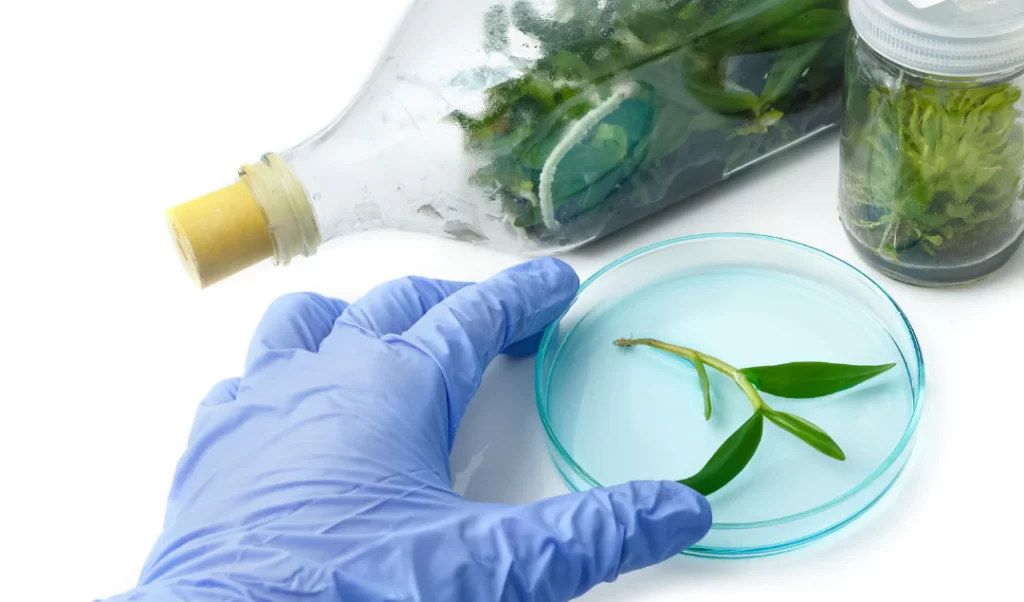The Benefits of Tissue Culture in Houseplant Propagation
Houseplant enthusiasts and professional growers always look for the best ways to propagate their beloved plants. Traditional methods, while effective, have their limitations. Enter tissue culture, a cutting-edge technique that revolutionizes plant propagation. This method, known as micropropagation, offers numerous benefits over conventional propagation methods. Let’s explore why tissue culture is becoming the preferred choice for houseplant enthusiasts. High Efficiency and Rapid Multiplication One of the most significant advantages of tissue culture is its efficiency. Traditional propagation methods, such as cuttings or seeds, can be time-consuming and yield a limited number of plants. Tissue culture, on the other hand, allows for the rapid multiplication of plants. A single plant can produce thousands of clones in a relatively short period. This high efficiency makes it an excellent choice for commercial growers and hobbyists looking to expand their collections quickly. Disease-Free Plants Disease and pest infestations can devastate a houseplant collection. Tissue culture provides a solution by producing disease-free plants. The process starts with sterilizing plant tissues to eliminate any pathogens. The sterile environment ensures the new plants are free from diseases, pests, and other contaminants. As a result, tissue culture plants are healthier and have a better chance of thriving than traditionally propagated plants. Consistency and Uniformity One of the challenges of traditional propagation is maintaining consistency and uniformity in the offspring. Plants grown from seeds can exhibit variations, even within the same species. Tissue culture, however, produces genetically identical clones of the parent plant. This uniformity ensures that each plant will have the same desirable traits, such as leaf shape, color, and growth habit. For collectors and commercial growers, this consistency is invaluable. Preservation of Rare and Endangered Species Tissue culture plays a crucial role in conserving rare and endangered plant species. Many rare plants cannot propagate through traditional methods due to their specific growth requirements or slow reproduction rates. Tissue culture allows for these plants’ rapid and efficient propagation, ensuring their survival and reducing the risk of extinction. Botanical gardens, conservationists, and researchers use tissue culture to preserve biodiversity and protect valuable plant species. Overcoming Seasonal Constraints Seasonal constraints often limit traditional propagation methods. For example, many plants can only be propagated during specific times of the year. Tissue culture, however, is not bound by these limitations. The controlled environment of a tissue culture lab allows for year-round propagation, regardless of external weather conditions. This flexibility is particularly beneficial for growers looking to maintain a continuous supply of plants. Space Efficiency Tissue culture labs require significantly less space compared to traditional propagation setups. Thousands of plants can be grown in a small lab, making it an ideal solution for urban growers or those with limited space. The compact nature of tissue culture labs also reduces the need for extensive greenhouse facilities, leading to cost savings and more efficient use of resources. Customization and Genetic Modification Tissue culture provides opportunities for customization and genetic modification. Researchers can use tissue culture techniques to introduce desirable traits, such as disease resistance or improved growth rates, into plant species. This ability to manipulate plant genetics opens up new possibilities for developing superior plant varieties. These advancements can lead to higher yields, better-quality plants, and increased profitability for commercial growers. Environmental Benefits Tissue culture contributes to environmental sustainability in several ways. Producing healthy, disease-free plants reduces the need for chemical treatments and pesticides. The efficient use of resources, such as space and water, also minimizes the environmental impact of plant production. Additionally, tissue culture can help restore degraded ecosystems by providing large plants for reforestation and habitat restoration projects. Cost-Effectiveness While the initial setup costs for a tissue culture lab can be high, the long-term benefits outweigh the expenses. The high efficiency, rapid multiplication, and reduced disease risk lead to significant cost savings over time. Commercial growers, in particular, can benefit from the economies of scale that tissue culture offers. For hobbyists, the ability to produce large numbers of plants quickly can also lead to cost savings and a more diverse plant collection. Enhanced Research and Development Tissue culture techniques are widely used in plant research and development. Scientists use tissue culture to study plant biology, genetics, and physiology. This research has led to numerous agriculture, horticulture, and conservation advancements. Researchers can develop new methods to improve plant health, productivity, and resilience by understanding the underlying mechanisms of plant growth and development. Conclusion Tissue culture is a powerful tool that offers numerous benefits for houseplant propagation. Its high efficiency, disease-free plants, consistency, and uniformity make it an attractive option for commercial growers and hobbyists. Additionally, tissue culture is vital in conserving rare and endangered species, overcoming seasonal constraints, and promoting environmental sustainability. As technology advances, tissue culture will undoubtedly become an even more integral part of plant propagation, contributing to the growth and diversity of houseplant collections worldwide.


